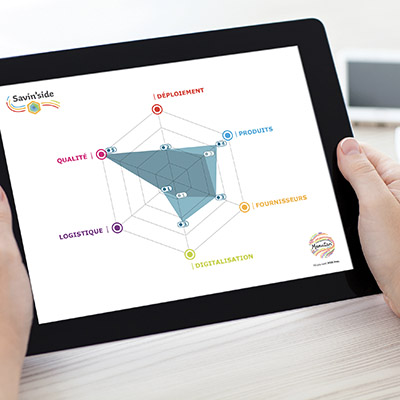In a pressurised economic context, businesses have one priority: improving their margins through cost reduction and avoidance. Procurement departments are at the heart of this approach, activating various possible strategies to optimise their spending. Far from being a simple adjustment variable, cost reduction is now a strategic lever for competitiveness for companies, across all sectors of activity.
Proven cost reduction strategies
In business, there exists a whole range of interconnected cost reduction measures. Well-known to buyers, these have proven their worth.
Negotiating with suppliers
The first lever for cost reduction remains direct negotiation with suppliers. By relying on established relationships, businesses have every interest in challenging their suppliers to obtain advantageous prices and conditions. This is the time to bring competition into play, examine existing contracts and open dialogue with suppliers. In this dynamic, the company will probably need to commit to a certain volume of purchases or particular payment conditions. According to the latest survey conducted by Deloitte, 41% of procurement departments use this method to adapt to volume volatility and avoid potential price increases linked to inflation.
Consolidating purchases
The second cost reduction lever favoured by procurement departments is to group their spending. When a company consolidates the purchases of its different departments, sites or even subsidiaries, it can obtain economies of scale as well as particularly attractive purchasing conditions. This tactic also allows for process rationalisation, resource mutualisation and skill pooling, which helps to reduce administrative costs.
Rationalising suppliers
Another cost reduction strategy appreciated in business is supplier portfolio rationalisation. This is all the more interesting to activate for long tail spend which, as a reminder, concentrates on average 75% of the supplier portfolio. The idea is to replace certain suppliers who are not very active with a reference distributor with an offering broad enough to cover all needs. Immediately, this allows for the reduction of supplier management costs, evaluated on average at £1,000/year/supplier. This then opens the way to other levers such as purchase consolidation and negotiation.
Collaborating with suppliers
Today, it is important to build solid partnerships with strategic suppliers. This contributes to securing advantageous prices, stabilising the supply chain, and thus guaranteeing resilience in times of crisis. This also opens the way to co-developing solutions to maximise value, in a win-win approach. Still according to the survey conducted by Deloitte, 38% of procurement departments focus on strengthening collaboration with their suppliers to identify mutually advantageous opportunities.
Eradicating maverick spend
A reservoir of cost savings as discreet as it is effective also lies in maverick spend. You know, those product and service purchases made outside processes that escape company control. This type of purchase concentrates significant hidden costs, which inevitably inflate their total cost of ownership. Bringing these purchases under control is synonymous with better visibility and effective expenditure management.
Digitalisation, supporting cost reduction
Thanks to digital solutions, procurement departments can go even further in cost reduction. Thanks to a consolidated vision, the company will be able to better manage its spending. This facilitates expenditure mapping, identification of savings opportunities and decision-making. This is what Grzegorz Filipowski, Partner - Head of Consulting at Marketplanet, tells us: "I worked with a company that was completely unaware that it was spending more than 20% of its procurement budget on duplicate purchases. It was only when we implemented a centralised system that these overlaps were brought to light. By consolidating contracts, they saved more than $250,000 in one year, and that was just the beginning."[1] Combined with the right analysis tools, this opens the way to other cost optimisation levers: anticipating price increases, detecting at-risk suppliers, comparing supplier performance...
Existing digital solutions also make it possible to optimise procurement processes from sourcing to invoice payment, thus reducing delays and associated indirect costs. For example, the digitalisation of transactions via an e-procurement solution can represent up to 80% savings! Thanks to the use of advanced technologies (EDI, RPA, AI...), more and more low-value-added tasks are even automated: approval processes, supplier follow-ups, invoice entry, etc. These productivity gains allow procurement teams to refocus on strategic missions to optimise costs or for other purposes: data analysis, supplier relationship management...
Lastly, supplier relationship management tools (SRM) are also good levers for optimising costs. And for good reason, according to Axiscope, 75% of companies that use such software see cost reduction as well as improvement in their procurement performance.[2] These software packages help to strengthen transparency, streamline exchanges and better monitor key performance indicators. Solid collaboration favours the co-construction of efficient solutions between partners.
Cost reduction, yes but without compromise
Any cost reduction strategy must also be sustainable. Throughout this approach, companies must ensure they respect the same requirements and make choices that remain beneficial in the long term. In other words, reducing costs must not compromise the quality of products and services, the efficiency of the procurement process, or the company's sustainable commitments. The era when companies turned to low-cost products of lesser quality, without ethical or environmental consideration, is now over.
Today, expenditure management, risk management and sustainable procurement are intrinsically linked. Moreover, the levers for action often allow for killing two birds with one stone. For example, energy optimisation or purchasing reconditioned products will allow for significant savings but also reduce the impact on the environment.
Proof by example
At Manutan, purchasing second-hand furniture can reduce carbon emissions by up to 70% and costs by 30%. An effective alternative for reconciling ecological and economic challenges.
Today, cost reduction can no longer be thought of as an isolated objective. It integrates into a global strategy of optimisation, digitalisation and sustainable development. This is how departments will become true transformation engines, competitiveness and long-term growth.
[1] Grzegorz FILIPOWSKI, (Partner - Head of Consulting, Marketplanet), 10 Smart Strategies for Procurement Savings - the system-driven approach, LinkedIn, 23 janvier 2025, [https://www.linkedin.com/pulse/10-smart-strategies-procurement-savings-approach-filipowski-ppwjf/]









